5 Hardware Myths preventing a Sustainable and Cost-Effective Digital Workplace
Is The Treadmill of Device Replacement Necessary?
If you are still operating on a yearly hardware refresh schedule, with devices replaced after three or four years of service, you’re living in the past. These schedules are not based on any real viability assessment, but rather on an indiscriminate time factor or warranty lapse. Innovative and sustainable digital workplace teams are embracing performance-based refresh strategies instead, but obstacles to this new strategy proliferate.
Barriers that slow down this change are typically embedded perceptions, or myths, based on the idea that “we must have the latest & greatest” otherwise we will be in a technical deficit. If we, as digital workplace innovators, can understand and remove some of these “myths" we can help organizations align to a more sustainable procurement and use strategy, helping businesses, people, & the planet.
Recently I took part in the Circular Computing: Sustainable IT Summit. In partnership with Circular Computing, I shared Nexthink insights from data taken from 17 million endpoints, mapped to the top 50 laptop models, and polls to debunk five common myths around hardware replacement strategies and the realities of adopting Sustainable IT practices. Here’s what we found:
- #Myth 1: Windows 11 Requires New Hardware
- #Myth 2: New Devices Have Better Performance
- #Myth 3: Employees Want and Need New Devices
- #Myth 4: Laptops Need to be Replaced to Ensure a Great Digital Experience
- #Myth 5: Newer Laptops Have Lower Energy Consumption
#Myth 1: Windows 11 Requires New Hardware
A common approach to introduce the latest desktop operating system is to use hardware refresh to achieve the goal. However, despite the official EOL for Windows 10 being Oct 2025, 69% of devices in our dataset are still running Windows 10.
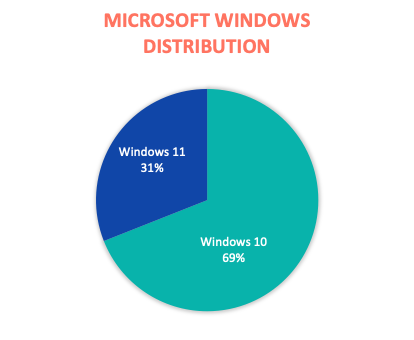
When we looked closer, we found that most of the hardware today supports the requirements for Windows 11, removing the need for a hardware replacement.
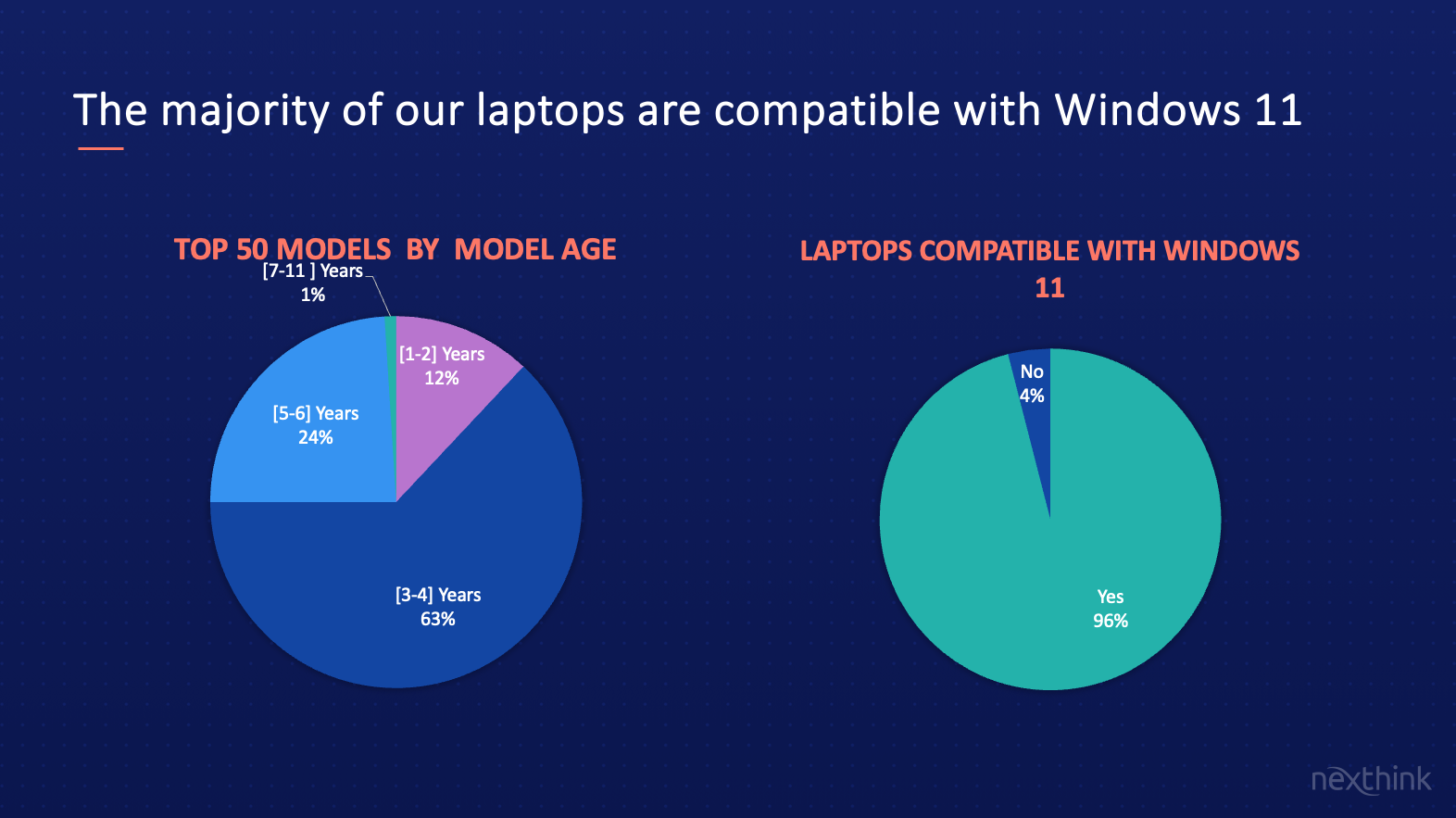
If new hardware isn’t necessarily required, why are organizations choosing to stay on older operating systems?
Migrating operating systems is a complex and disruptive process for business operations. Extensive planning and testing is required to ensure applications function and business processes are not adversely interrupted. During the migration process, users are inevitably taken offline for extended periods, disrupting their ability to work. All this pain for a very familiar desktop experience that they are used to.
If the results do not drive spectacular benefits for employees but incur costs and major disruption to IT and business operations, it’s no surprise that this lag occurs.
Choosing the right hardware and employees to target, whilst avoiding unnecessary hardware replacements is essential to a smooth migration process. With Nexthink, we make this easy with our Windows 11 Migration library pack.

Conclusion: Windows 11 does not always require new devices.
#Myth 2: New Devices Have Better Performance
New models generally have the latest CPU architecture. Looking at our data, we found that 76% of devices have CPUs under 4 years old.
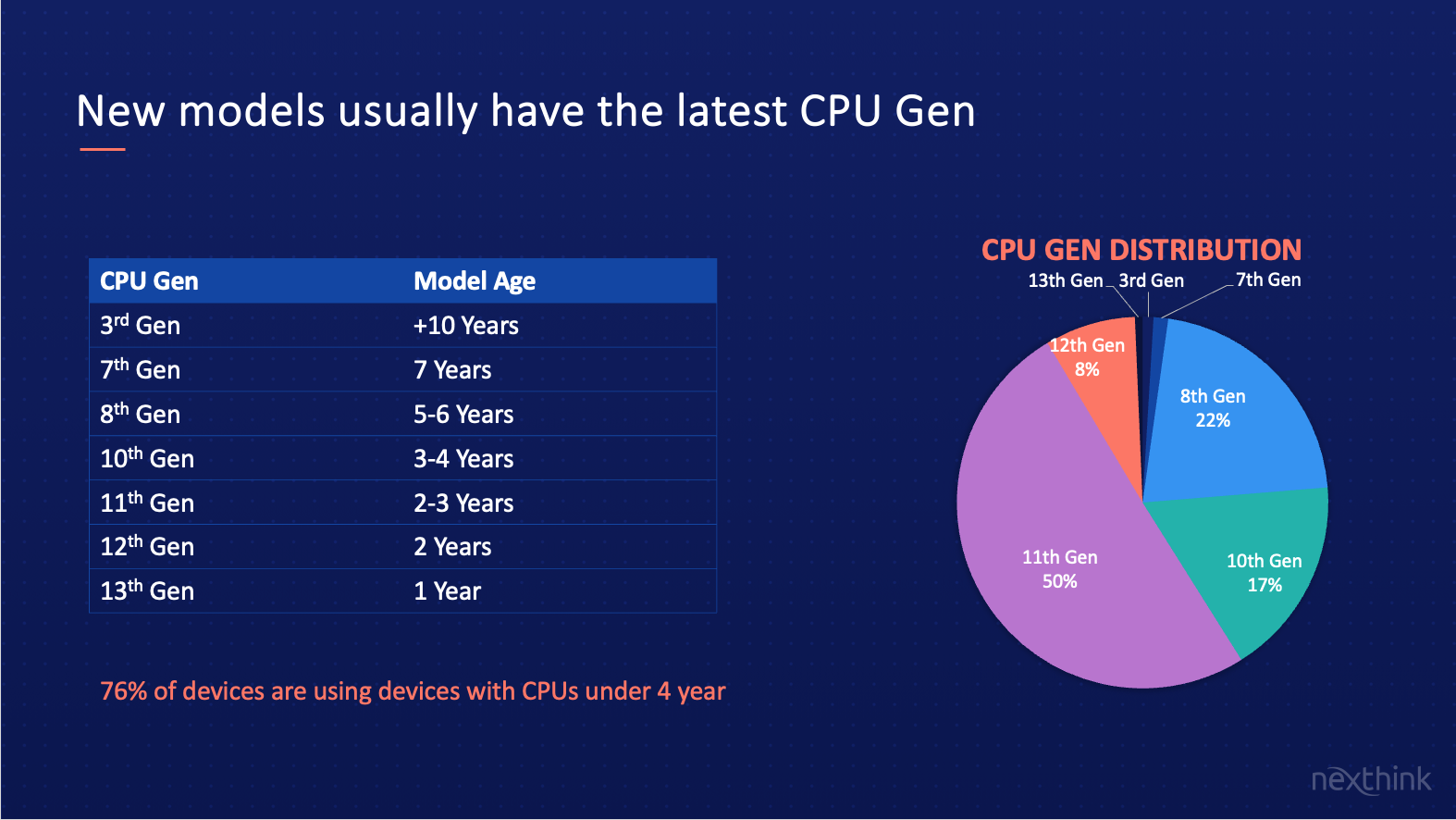
However, CPU power does not seem to have a high correlation with a better Digital Employee Experience. Instead, we found that IT teams should focus on additional memory. Historical data shows the average RAM has increased 51% in recent years. If businesses want faster machines for their employees, improving RAM will provide a better return than focusing on CPU.

Conclusion: Better performance can be simply a matter of ensuring devices have adequate memory.
#Myth 3 Employees Want and Need New Devices
Sustainability is a hot topic and investments in the space are paying off. Increasingly, we see employees choosing to work for companies that implement environmental best practices. This trend suggests that organizations seeking to hire the best talent should include sustainability initiatives in their overall corporate strategy.
We found that 76% of employees were happy to contribute to sustainable objectives by extending the use of their device. When we looked closer at why employees resist extending their laptop lifetime, the top answer was device performance problems, a problem we covered in Myth 2.
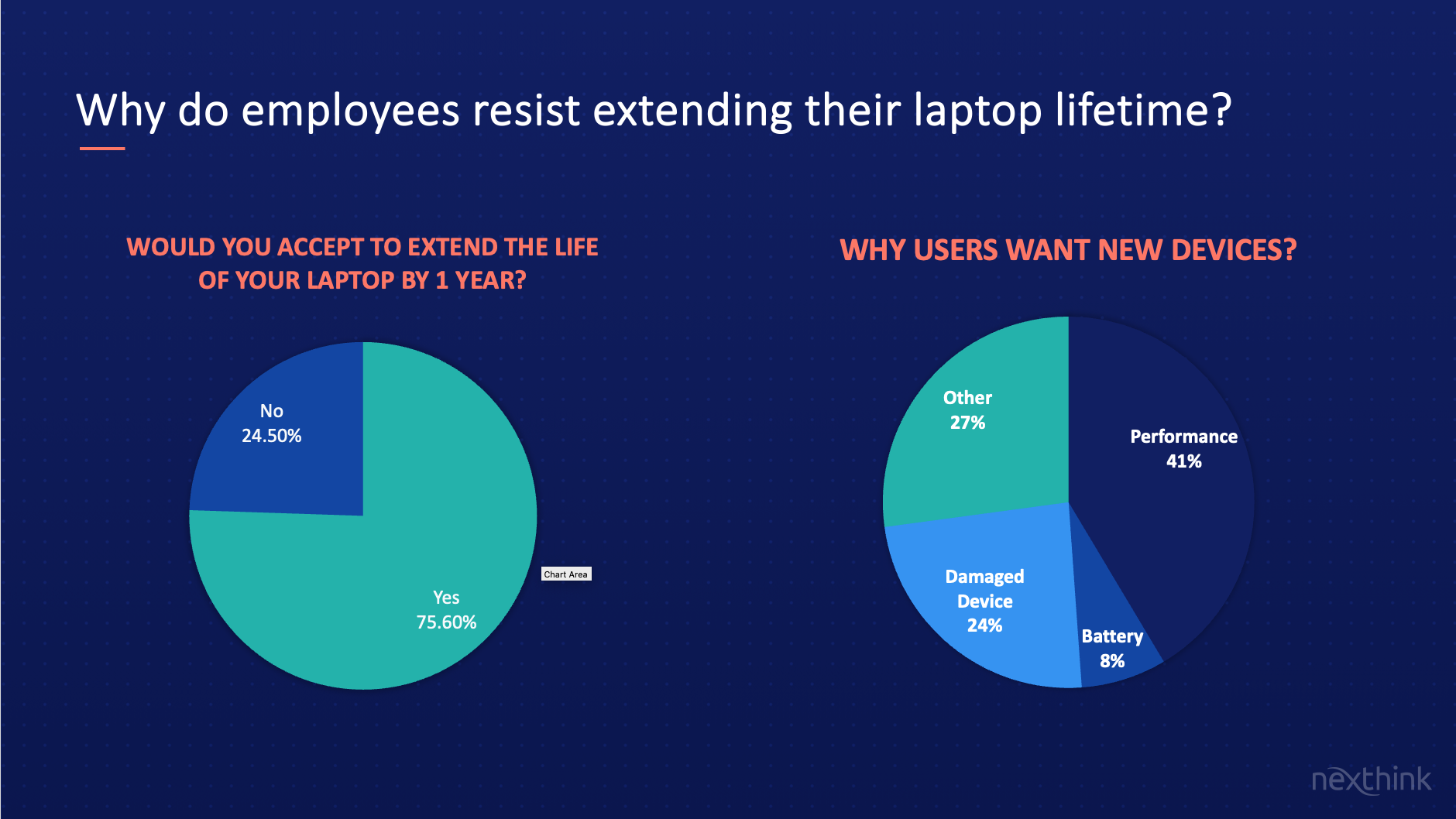
Most corporate users can’t differentiate between new vs used devices. The perception
of new is often enough. The reality is that if a device looks and feels like new, and has good performance, employees will love it. Organizations can achieve this impression of newness by employing remanufactured devices.
Remanufacturing is the process of renovating, upgrading, and repackaging hardware to improve its performance. A closer look at the financial and carbon impact of remanufacturing reveals a significant impact on sustainability. In the following model, we compared device replacement with remanufacturing for a large organization over three and a half years.
For a company with 10k devices, an intelligent approach can yield savings of $6.2M whilst saving 2,110,000 KG Carbon Dioxide or CO2 Equivalent to 416 US homes' electricity use for one year.

Conclusion: Giving devices a second or third life is a viable approach, with the potential for huge financial and sustainability benefits.
#Myth 4 Laptops Need to be Replaced to Ensure a Great Digital Experience
At Nexthink we understand that what makes up an employee’s digital experience goes far beyond the desktop device they are using. There are many approaches to improving device experience that do not relate to hardware replacement.
Identifying and fixing problems proactively can help organizations avoid unnecessary
hardware replacement or identify candidates for hardware reallocation initiatives. With Nexthink, we make this easy with smart Diagnostics insights and OOB Library packs to identify and fix common problems affecting hardware performance like poor battery life, memory and CPU.
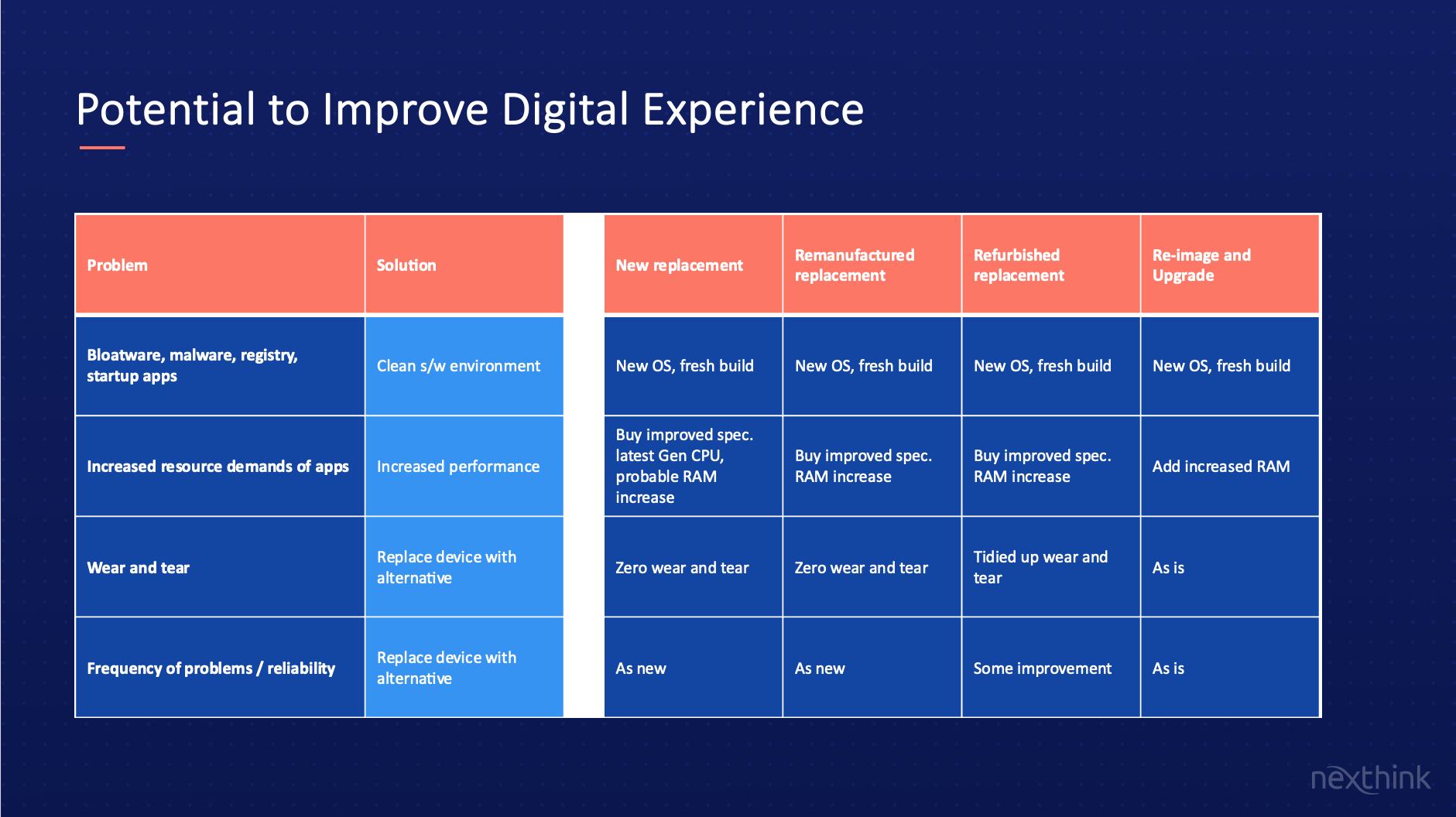
Conclusion: From removing bloatware, to intelligently upgrading or remanufacturing devices, there are many ways in which day-to-day digital experience can be optimized.
#Myth 5 Newer Laptops Have Lower Energy Consumption
Using statistics from US EPA and vendor reports for the top 50 models, the data reported shows that newer models do not reduce the impact on the environment during their life.
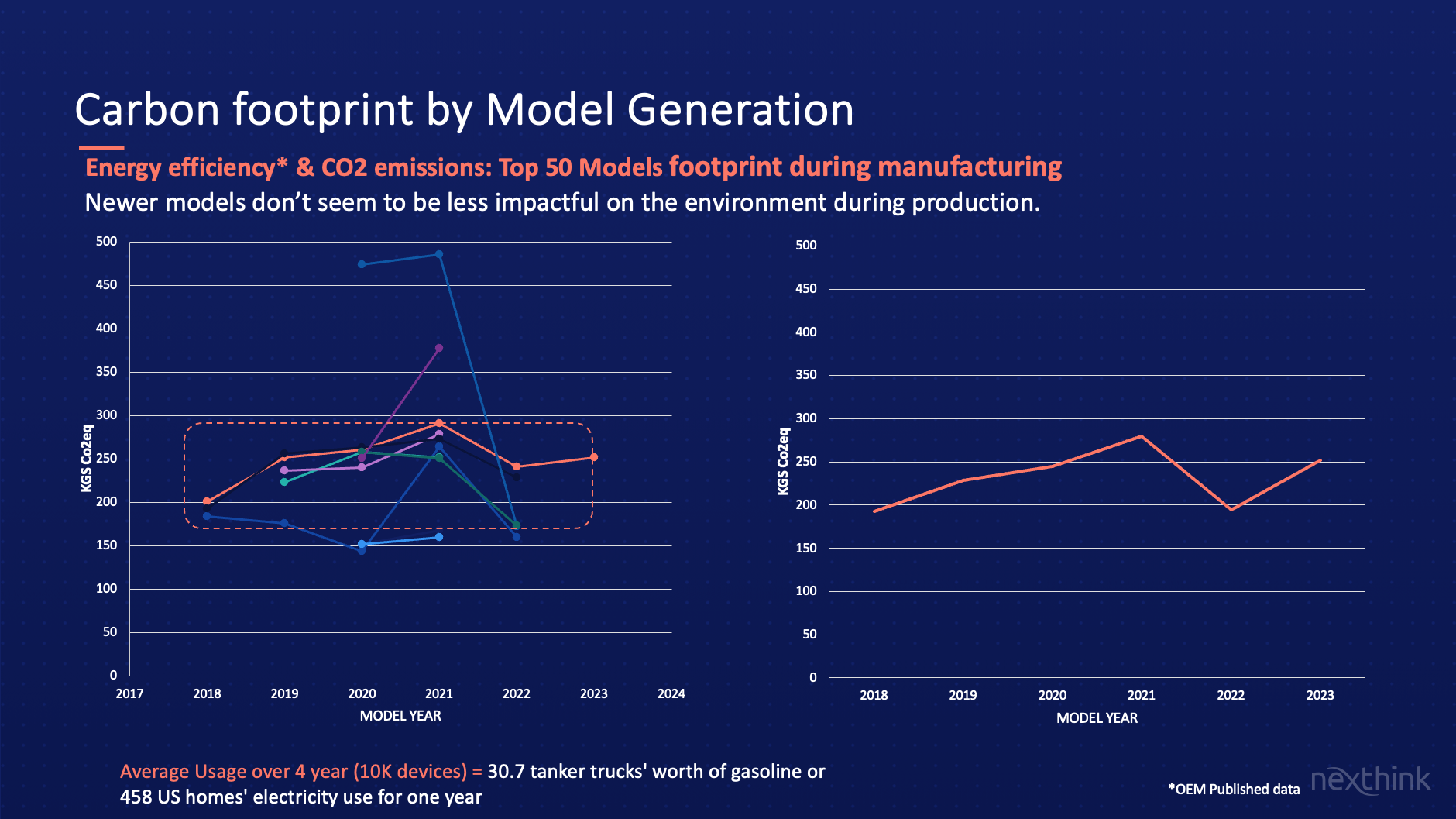
The data also shows that there has been no significant change in efficiency over the years.
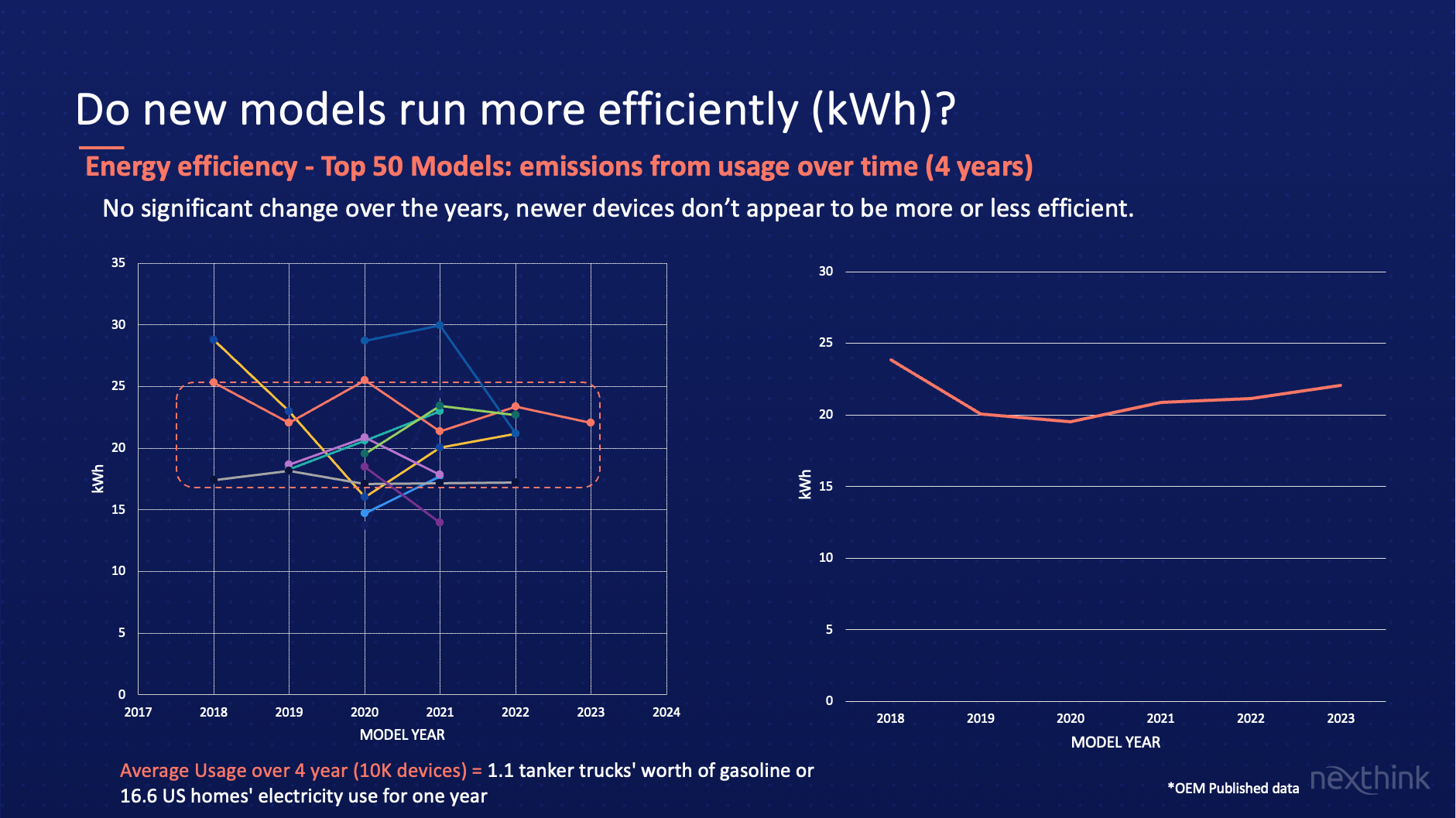
Conclusion: Newer devices do not appear to be more efficient.
Putting Digital Employee Experience into Practice
The world of today is changing to become more thoughtful in its decisions by balancing the needs of business with a premium user experience whilst aligning
to corporate sustainability goals. Our advice is to remember the following:
- Focus on employee experience, not the latest devices or their specifications
- Newer is not necessarily better, employees want a device that helps them do their job
- The carbon footprint and energy consumption of devices have not declined over time
- Extending device lifecycles spreads costs and aligns with corporate sustainability goals
To break free from the traditional approach to hardware replacement, a change is required. Change requires a new approach that moves away from ad-hoc projects to a corporate-wide change. At Nexthink we recommend the following approach:
- Introduce Nexthink and implement a DEX Ops Centre
- Change EUC Processes with DEX Insights
- Drive Employee Education & Awareness of Sustainable IT Practices
- Transform to an Intelligent Hardware Replace Policy
Organizations that adopt a DEX-based hardware strategy are winning big on cost savings and sustainability. So, if you have Nexthink, the reality is that great outcomes can be achieved through a series of small steps. I’ll leave you with a customer example. Using Nexthink, a Global organization with over half a million devices was able to make improvements in just 12 weeks, saving 100 MWHR of Electricity, the equivalent energy consumption of 500 US homes per year.
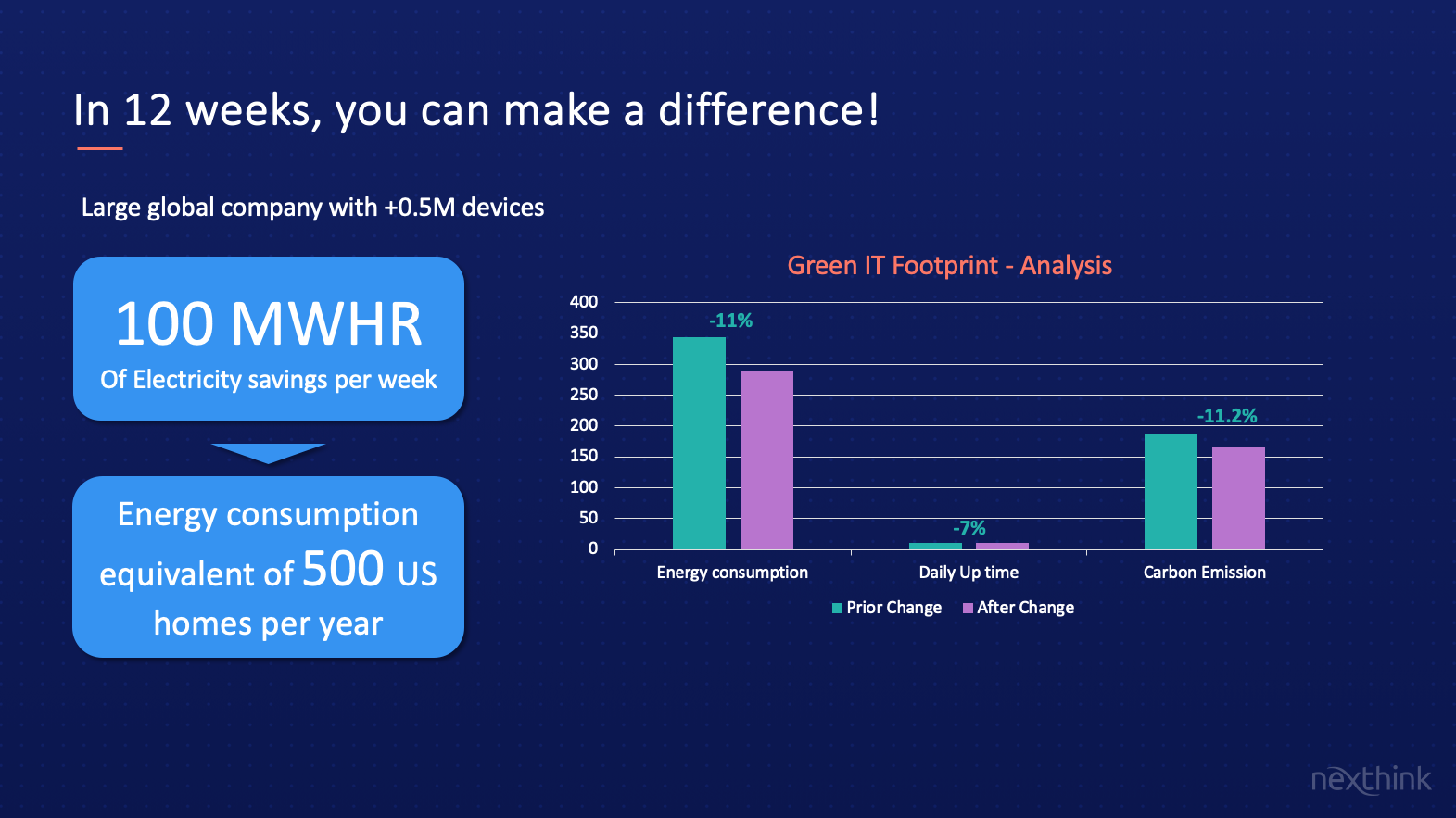
With Nexthink, you can take the guesswork out of Sustainable IT practices with actional insights at your fingertips using our Sustainable IT Library Pack.
If you want to know more about how Nexthink can unleash a DEX-based approach to hardware replacement and sustainability, please contact us.